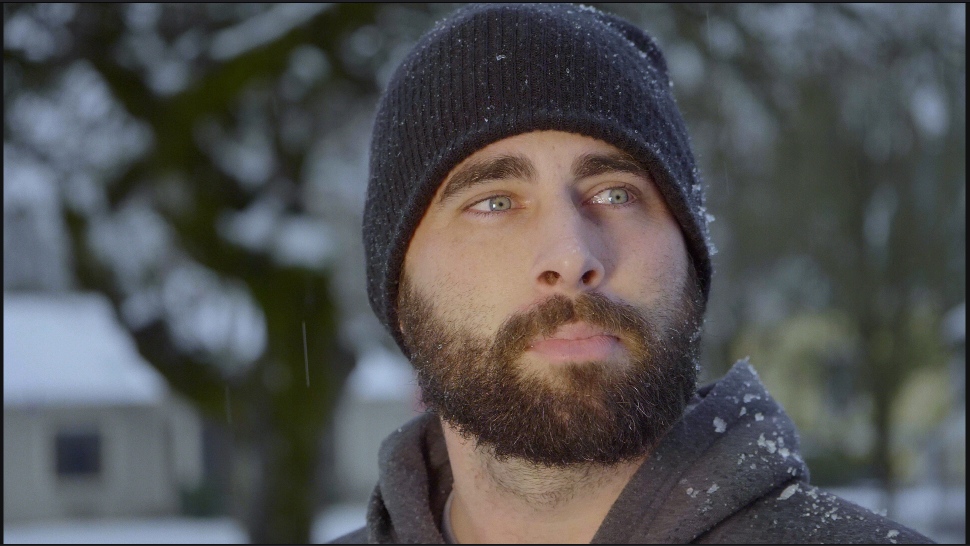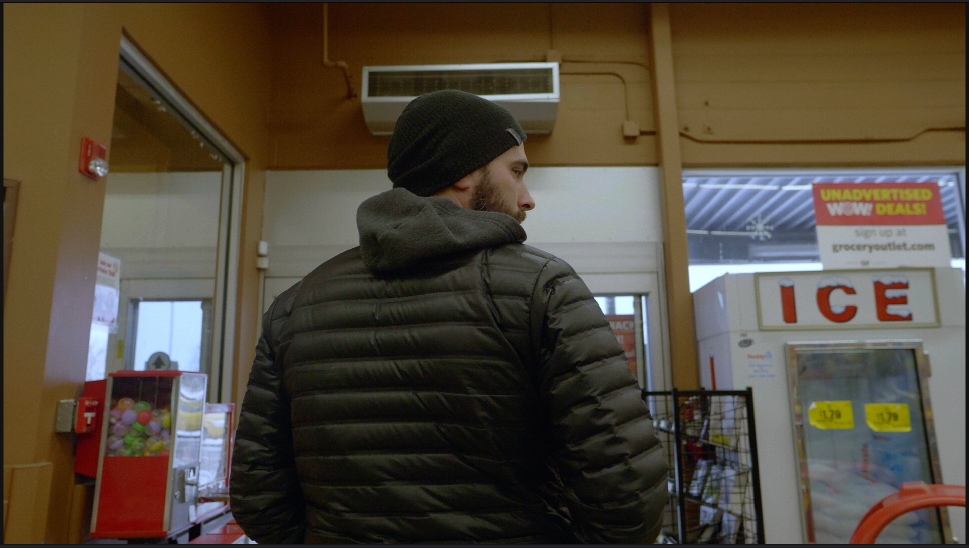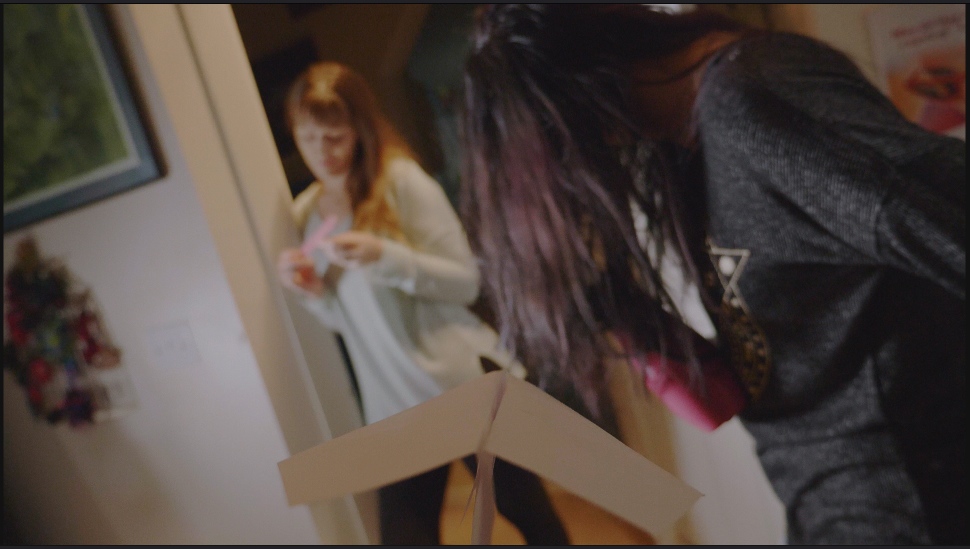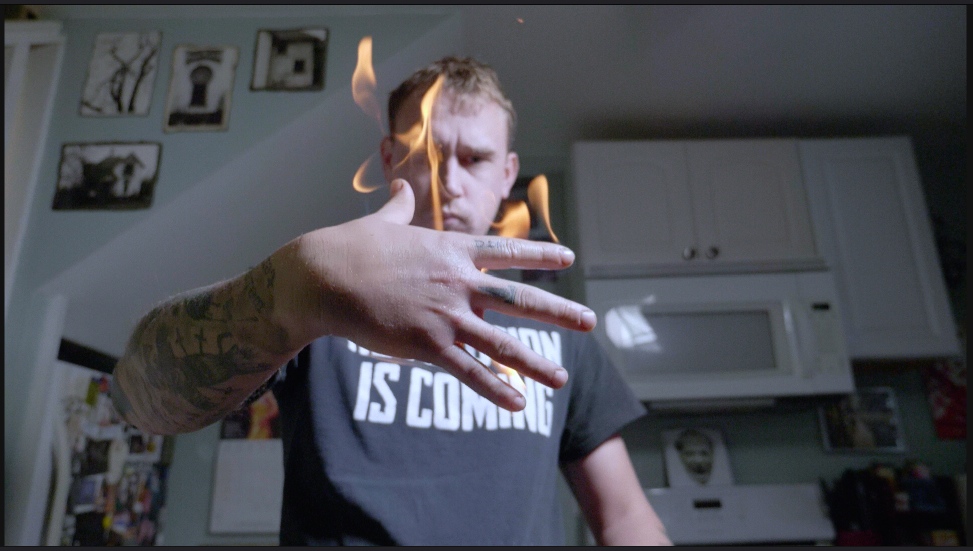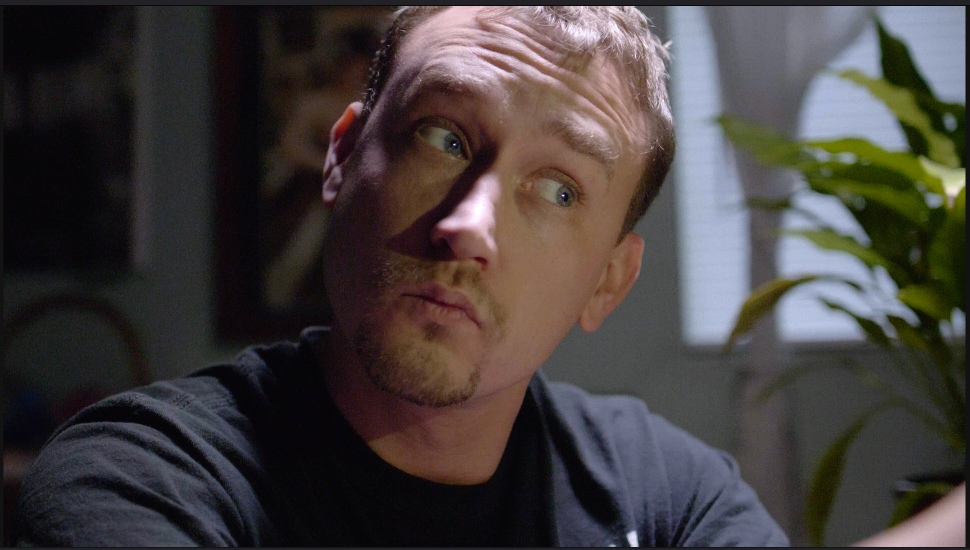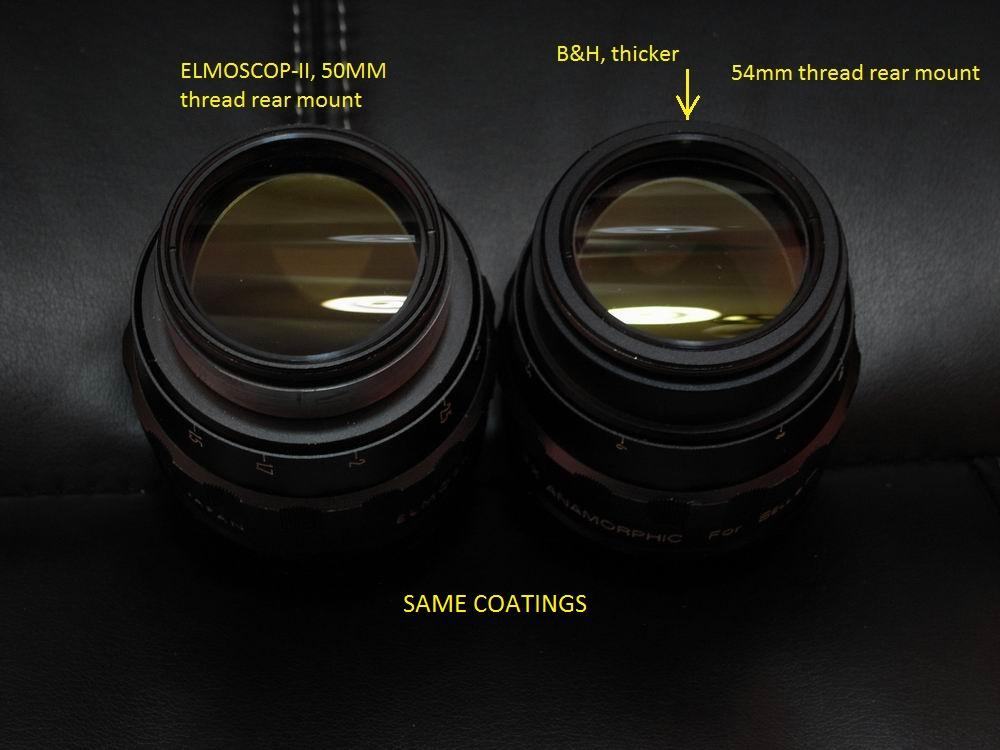Leaderboard
Popular Content
Showing content with the highest reputation on 01/11/2017 in all areas
-

GH5 180fps Clips for Download
kaylee and 4 others reacted to AaronChicago for a topic
Looks great! I think it's so funny how far cameras have come in 5 years, yet the complaints compound even more. "Yeah it's HD 180 frames per second in a handheld camera with a 5 axis stabilizer, but....."5 points -
Looks Like your getting some free press... Cool NX-1 user in South Korea(I think... Maybe he was on the samsung team?) just dropped a promo for an NXL review.5 points
-
Millions were making films and taking pictures in the past. Maybe Super 8 was more popular than filming with DSLR? Don't think that billions of batteries and old DSLRs are so environmentfriendly. My cameras and projectors are 40 years old and still work. That's possibly better than buying a new camera every year... Back on topic: I think it should be mentioned that we are talking about reversal film here. And that is what makes it so fantastic. As for color stock we only have Vision left and you have to go to Andec-lab in order to let them make a positive. As a filmmaker I always prefer the projection. For me that is the point of film... (I am an enthusiast)3 points
-
Agreed!!! Also worth checking out the "CinematographyDB fans" YT channel! ;-) "Every Frame is a Painting" is a other must watch channel. Now for something a little different, sound: Matt Price / SoundRolling.com is in my eyes by far *the best* (arguably the only!) non-commercial (i.e. not run by a manufacturer or retailer) YT channel about sound from the perspective of a working working professional location sound recordist. https://youtube.com/user/ThatWasSound3 points
-

Guess the camera... (review incoming)
markr041 and one other reacted to John Brawley for a topic
Because there are no ads and the visual noise of youtubes other clips that inevitably comes up. JB2 points -
Software support is obviously required and this often lags hardware by years. E.g, Intel's Quick Sync hardware-assisted H264 encoder was introduced with Sandy Bridge in 2011. To my knowledge Premiere Pro only recently started supporting that -- and for Windows only, not Mac. That was roughly a six-year gap. Skylake's Quick Sync has HEVC/H265 support for 8-bits per color channel but Kaby Lake will be required for HEVC at 10-bits per color channel. Hopefully it won't take Adobe six more years to add support for that. I think nVidia's NVENC has HEVC hardware support starting with Pascal and AMD's VCE with Polaris, but the software development kits, APIs and drivers must be available and stable for application developers to use. So there is a difference between raw hardware availability (in silicon) vs being able to harness that from the application layer, which can require stable and tested SDK and driver support. Traditionally there has been concern over image quality of hardware-assisted encoding, but FCPX has used Quick Sync for for years (single pass only) and it looks OK to me. But I don't think it has H265 hardware support yet. Lots of people want H265 because the file sizes are smaller, but you don't get something for nothing. H265 requires vastly greater computational complexity which means the CPU burden to encode/decode is much greater. In this paper, VP9 was 2,000x slower to encode than x264, and H265 was 3x slower than VP9 (or 6,000x slower than x264). So it took thousands of times more computation to save at most about 50% in size. This is just a single paper and algorithms and efficiencies are improving but it illustrates the basic principle. iphome.hhi.de/marpe/.../Comp_LD_HEVC_VP9_X264_SPIE_2014-preprint.pdf If that computation is done in hardware (IOW you essentially get it for free) then it may be a worthwhile penalty. But if only software encode/decode is used for H265, it may be impractically slow. Also if full and high quality software support at the SDK level is not available, the fancy silicon doesn't help much. For the iPhone it is affordable for Apple to use H265 for Facetime. They completely control both hardware and software, and quantities of scale mean any design or fabrication cost is amortized over 50 million phones per year. If it costs a little more to add H265 logic to a corner of a SoC (System on a Chip) that already has 3 billion transistors, it's no problem. For a software developer like Adobe, they must deal with three basic H265 hardware acceleration schemes, NVENC, VCE and Quick Sync, some of which have multiple versions, each having varying capability and features. So maybe that explains the delay on Quick Sync in Premiere Pro. H265/HEVC has also been hampered for years by disputes over royalties and intellectual property, which is one reason Google is pushing VP9 which has roughly similar capability but is open source and royalty free. However VP9 itself will probably be replaced by the similar but improved royalty-free AV1: http://www.streamingmedia.com/Articles/Editorial/What-Is-.../What-is-AV1-111497.aspx2 points
-
Incredible RED sensor
Marco Tecno and one other reacted to tomekk for a topic
Red could be using some form of noise reduction and applying it to RAW which other manufactures don't do (yet:(). If true, ISO performance won't be that impressive. We need more tests ;).2 points -
Guess the camera... (review incoming)
Justin Bacle and one other reacted to Kisaha for a topic
a camera obscura with a sensor at the back and a SD card at the side.2 points -

EOSHD Pro Color for Panasonic (GH4, GX85, G85 + more)
Mackeral_Fillet and one other reacted to Ronnie Amighetti for a topic
I'm still testing it out in a variety of situations/settings and still like it. Sometimes it's way too warm/reddish for my tastes but I'm finding that it all depends on how you expose the image. I've now dialed in sort of a custom white balance on my GX85. Both with AWB or with a proper custom white balance I have A1 M1 dialed in. Seems to work better and the RGB parade confirms.2 points -

New information regarding H.265 on the Panasonic GH5
Marco Tecno and one other reacted to aldolega for a topic
I think it's important to remember that h264 has many flavors for different applications, and at this point they are all pretty mature, and have been tweaked and tuned and tested for almost a decade now to their maximum potential; some for consumer applications where low bitrate/easy en/de-coding is priority over IQ, and some for prosumers/pros who demand quality and have the hardware/software to work with the higher profiles and bitrates. Look at the difference between stock GH2 and the mature hack settings; both are h264, but the tuned settings are undoubtedly better quality. h265 is new and mostly the only implementations I know of outside of the NX1 have been video chat, mobile platforms etc where again low bitrate and easy en/de-coding are the priority. The NX1's h265 implementation seems decent for a first go, certainly better than early h264; but the bitrate hacks have shown it can be improved, and (AFAIK) the present hacks are only allowing a higher bitrate, not tuning/altering the encoding itself. So when the camera companies' engineers (and hopefully hackers, if they are able to get deep into the NX1 or another h265 camera) start going to a higher bitrate and tuning/tweaking the encoding implentation itself: I think there could be big gains made.2 points -

New information regarding H.265 on the Panasonic GH5
Claes Lind and one other reacted to theSUBVERSIVE for a topic
But it also says 10-bit 420, so it doesn't look like it's 10-bit 422 for now. I know it's not MJPEG but I based my arguments on AVC codecs we have. Sony offers XAVC-I 480Mbps for 4K48p and Panasonic offers AVC Ultra 640Mbps for 4K48p, sure it's possible to get it by 400Mbps and still have a good quality, but it doens't look like Panasonic is going to do that. Following the chart and getting 400Mbps All-I 10-bit 422 kind of confirms to me that Panasonic is following similar specs to what they already have in the AVC Ultra, they probably will just change the wrapper. Sure it's still in pre-production but there is not much open to interpretation about the chart. You just follow the lines and you get 4K48p 150Mbps 8-bit 420, the yellow highlight is simply to say what's coming via FW.2 points -
I'm sorry, but I do not understand any of the reasoning behind why H265 is not used. I do not think it is correct that H265 cannot be used for intra. If H264 can be, so can H265. And H265 is also supported in many editors now. H265 is also hardware decoded in all recent Intel chips; has been since at least the 6th generation (now in the 7th). The inefficiency of H264 limits the quality of what we shoot if we want to stay with standard storage, like sd cards. I think there is more to this than the faulty reasoning that was stated, and in any case it should not be applauded by video shooters.2 points
-
At film school, your professors are usually not actively working in the field. So this WanderingDP - interview young up and coming DPs who share unique perspectives and ideas is incredibly valuable. I learned a ton from the interview with Chayse Irvin, super talented young dp who shot the Lemonade Beyonce film. http://wanderingdp.com/1 point
-
Incredible RED sensor
Marco Tecno reacted to wolf33d for a topic
http://www.sonyalpharumors.com/red-just-dethroned-sony-a7rii-dxomark/ The new APSC 35mpx Red sensor beats everything in the world of stills camera. Higher dynamic range than D810 (15.2 stops!!!!) and incredible tonal range and high ISO I do not understand how an APSC sensor like this can get that much DR and high ISO capability VS lets say a D810 sensor. Are RED sensor that much more advanced? Why dont we have APSC sensors with 15.2 of DR in stills camera? Or at leas in FF sensors. I dont get it. If RED can do this why not Canon Sony Nikon or anyone else. I want a 35mpx FF sensor with those performance in DR and high ISO in a Canon mirrorless body compatible with Canon lenses with IBIS, 4K60p, FHD240p, Canon DPAF, H265 150mbps codec + prores option, 10 bit. for 3000$. This will come in about 3 years. But damn... It exists today so why not1 point -
Strobes are measured in watt-seconds (not watts) and in guide numbers. Guide numbers rate the actual illumination output of a strobe, while watt-seconds usually measure the electrical expenditure of a strobe's "power pack." A watt-second is equivalent to the expenditure of power of one watt for one second. So, a momentary flash from a 1,000 watt-second strobe is equivalent to leaving the shutter open for one full second with a 1,000 watt constant light source (all other variables being equal). That's a lot of light. Let's make another comparison between a 1,000 watt constant light with a 1,000 watt-second strobe. If you shoot 24fps video with a 180-degree shutter, your shutter speed is 1/48th of a second. So, shooting 24fps video with a 1,000 watt constant light is only yielding the equivalent of 1/48th of 1,000 watt-seconds -- only 20.8 watts-seconds. Generally, if a monoblock strobe and a strobe with a separate power pack have the same watt-second rating, the monoblock will be brighter. Monoblocks are more efficient because they have no head cable to incur line loss. If you intend to do a lot of stills outdoors and/or shoot stills indoors with large sources (umbrellas, soft boxes), then you will probably be much happier with strobes. Strobes are a lot more powerful than most constant sources, and strobes can freeze/sharpen action. Strobes allow one to make daytime exteriors look dark, with a short shutter speed and short flash duration. Most LED and fluorescent sources can't even come close to achieving this power/time density, and using focused tungsten and HMI sources to do the same would probably fry the subject.1 point
-
Just did it, sorry for being a bit harsh. Let me describe what I did: i have set the lens to Aperture mode and then to f16 (maximum of my lens). The lens is still wide open. I press the shutter button, the aperture (e.g. the blades of the lens) switch to f16 and after the picture is taken, the aperture is again wide open. I can provide you with a video if you want me to.1 point
-

Incredible RED sensor
webrunner5 reacted to Don Kotlos for a topic
Every RAW output has some kind of preprocessing. The same way that hot pixels are specific to the sensor and are remapped in camera, noise can have a pattern that is sensor-specific and then is preferable to have it done in camera than having to do it every single time in post. Moreover if the camera doesn't record high bit depth RAW video, then you will get much better results doing in camera than in post. Now, of course if overdone then it will look like shit and if you don't have the RAW output you can't do anything about it in post I would use "mislead" instead but I get the point. For example Fuji's claims about having FF noise levels with Xtrans rely on 1.Noise reduction even in RAW files 2.Having different ISO standards than anyone else, so ISO 6400 is more like 3200 and 3.More green photodetectors. Great colors though! Size is a major part of the cost, but pixel density, custom design, and production volume play a big role as well. Also these are exponentially increasing costs so its hard to estimate the real cost of such a sensor based on just the size.1 point -
This guessing game is getting boring. Out with the truth!!! P.S Why do people still upload and pay for vimeo... It can't stream to save its life and I dispute that the end result is better than YT.. Even if we had a little better colours here and there ,chopy videos are not going to win any favours..1 point
-
Incredible RED sensor
Liam reacted to Mattias Burling for a topic
Before the A7s the best iso was an APS-C. It comes and goes and crop factor doesn't affect exposure. A 1" Rx100 kicks the ass of many older APS-C etc.1 point -
I have actually used Joby's, so I can attach the camera to all sorts of places, before there was any stabilization in small cameras. Here are two low-light videos:1 point
-
GH5 180fps Clips for Download
Marco Tecno reacted to bunk for a topic
There is either a lot of NR going on or the compression is at fault, but a lot of detail is missing ...especially noticable on the skin (subjective as I wouldn't recognise it on a wall). The screenshots are taken from frames were some detail was still visible. It's not kinefinity but it's a joy to grade nevertheless. If possible I really would like to see how CineD is behaving.1 point -
The ball is in Sony's court? What? I don't understand the Sony reverence. Panasonic, Olympus, Samsung, and even Canon have introduced cameras with Cinema 4k and actual 24fps. Sony hasn't. Moreover, Sony can't even create a camera without overheating issues. Sony needs to play catch up in so many ways they shouldn't even be mentioned as a viable option for anyone but masochists.1 point
-
All completely handheld, so the trembling is mine (plus wind sometimes). The X3000 has the best stabilization system available for camcorders - BOSS. But, I did not use the best stabilization mode (Active, which combines BOSS with EIS). I have gotten better at handheld with it, and have found that active mode does improve the stabilization without any visible degradation of IQ. It is much harder to hold steady a very light camera, whatever the stabilization system. The key point for me is the small size (I can take it anywhere; I can get shots in a small amount of time with no setup); so if I have to use a tripod then there is no point to this camera however good its video quality. On shadow/highlight: I am always surprised by the range. On bright days sometimes the ooc footage looks overexposed with hot spots but when I bring down luminance in post, the colors become more saturated and the hot spots disappear. In the sunlit snow, the clips were slightly underexposed, but bringing up luma did not result in perceptible shadow noise. I could have done more with curves, but did not.1 point
-
1dx II vs a7r2 - Dave Dugdale responds
gethin reacted to Hanriverprod for a topic
Dave looks better on the left and at my age I'd also rather be shot on the 1dx ii. Don't know if that's a good thing though.1 point -
What's the purpose of telling anything technical related in threads on EOSHD? I've myself learnt a great deal on EOSHD, and I've myself picked up quite a lot of news that I probably would not have, had it not been because someone had made a thread about it. So, in the same sense, since I hadn't seen it mentioned on EOSHD before, I figured that the topic would interest others than myself on EOSHD! ...and for the film vs digital for myself: I started out shooting stills on film and I really like the look of film. The practical parts of shooting with digital is keeping me in the digital-only camp for now though. But maybe I'll some day venture back to film - and then I'm really happy if there are some good films left. Hence it makes me happy to read news like this.1 point
-
Well, I have done star Timelaps series thoughout several nights, we went for a walkn in the black forest in heavy snow on the camera. All good. I am happy that the GH4 is weather sealed.1 point
-
Thanks. Hard to say, with Pro Neg STD -2 shadows/highlights I could get about the same DR as with the D5200 using Flaat11, there was maybe a little less color information in the darkest areas. I'd say between 10-11 stops without F-Log, but that's only my unscientific guess1 point
-

1dx II vs a7r2 - Dave Dugdale responds
jasonmillard81 reacted to jcs for a topic
Hey Shawn, the 1DX II 4K is soft. It's ok, it looks great! Even the GH4 4K has more detail, however the 1DX II has much better color control and the image looks more organic. To get full detail 4K we need an 8K sensor and good downsampling to prevent aliasing (Nyquist)...1 point -

New information regarding H.265 on the Panasonic GH5
hmcindie reacted to Eric Calabros for a topic
This h.265 "same quality for half file size" slogan is just true about ridiculously low bitrates, above 100Mbps you gain nothing over h.264 quality wise. Kaby Lake encodes/decodes it with full-hardware acceleration, but we don't know yet how efficient it performs the job compared to doing the same with h.264. and just because hardwares are ready, doesn't mean softwares are also ready to use them to their full potential. I think 400Mbps is not enough for 48fps. since its ALL-I, for every frame there is only 1MB room. Its a bit low for a 9 megapixel image.1 point -

Valuable insight and interviews with working DPs
Cinegain reacted to August McCue for a topic
http://www.hollywoodreporter.com/video/rodrigo-prieto-linus-sandgren-charlotte-bruus-christensen-bradford-young-caleb-deschanel-john- They're back!!1 point -
It's a little early but just playing with those clips a bit more, I'm really not that happy with the colors. This reminds me of my GH4 and my struggles getting really good color out of it. It's a little better than my Sony A7s and 6300 but not as good as the Samsung NX1. To be honest, I'm a little bit less enthused about it now than I was last week. Hmmm.. decisions..1 point
-
GH5 180fps Clips for Download
Neumann Films reacted to SuperSet for a topic
Looks like the Sigma 1.4, based on the description1 point -
GH5 180fps Clips for Download
Neumann Films reacted to SuperSet for a topic
Thank you again for doing this, Luke. Hmm..I wasn't able to get any really good skin tones out of these so maybe someone else can light the way. Good luck, fellas.1 point -
I think its hard to judge softness and even aliasing from a youtube stream. We're talking about 8mbps. The downloadable footage will tell when its available. Still looks to be the best implementation of overcrank in a DSLM yet.1 point
-
It should if it is a Canon mount lens and you use either a Metabones smart adapter (focal reducer or non focal reducer) or Kipon (non focal reducer only). That is it should at least work for AF for stills. Video will need someone to try the lens with the various adapters.1 point
-
New information regarding H.265 on the Panasonic GH5
Marco Tecno reacted to SuperSet for a topic
Premiere CC 2017 handles the NX1 H265 files just fine.1 point -

New information regarding H.265 on the Panasonic GH5
Kisaha reacted to Don Kotlos for a topic
From the info that Panasonic has in these charts, it looks like 48p will be just 150mbps 4:2:0 8bit IPB. H265 in the examples that you posted is 2% of the original H264 file size, and at these rates of course you are going to loose some detail compared to the original. The quality also depends on the implementation of each codec. The BBC R&D video coding research team wrote a paper on this and concluded: "It can therefore be concluded that the HEVC standard is able to deliver the same subjective quality as AVC, while on average (and in the vast majority of typical sequences) requiring only half or even less than half of the bit rate used by AVC. This means that the initial objective of the HEVC development (substantial improvement in compression compared with the previous state of the art) has been successfully achieved." Also, H265 can have an intra frame version the same way H264 has From Wikipedia: "The maximum bit rate of the profile is based on the combination of bit depth, chroma sampling, and the type of profile. For bit depth the maximum bit rate increases by 1.5× for 12-bit profiles and 2× for 16-bit profiles. For chroma sampling the maximum bit rate increases by 1.5× for 4:2:2 profiles and 2× for 4:4:4 profiles. For the Intra profiles the maximum bit rate increases by 2×" And in the original H265 standards look for the "general_intra_constraint_flag".1 point -

New information regarding H.265 on the Panasonic GH5
Kisaha reacted to webrunner5 for a topic
Well there are different examples that show just the opposite http://www.videoconverterfactory.com/tips/h265vsh264.html1 point -
Your ideal NX1 Settings
August McCue reacted to ricardo_sousa11 for a topic
Love the look of this! I'd love to grade something like this, but unfortunately it never snows where I live! Great work!1 point -
That's some lens... Does anyone know if AF works with these non Lumix lenses (with an electronic mount)?1 point
-
GH5 IBIS With Panasonic Lenses Only?
Emanuel reacted to Simon Shasha for a topic
I thought as much. Next thing is to find out if a Sigma 18-35mm F1.8 + 0.71x Metabones Speed Booster will vignette on GH5 - given that there's no crop-factor in 4K like GH4.1 point -
YI 4K60p Action Camera
webrunner5 reacted to mercer for a topic
Wow... those look great. That is some high quality video from an action cam. Was there any color work done to those videos in post, or is it straight out of camera?1 point -
The Universe is a kind of reactive computer. What you think it will create, you being part of it.1 point
-
1 point
-

Biggest clusterfuck of 2016
enny reacted to mechanicalEYE for a topic
I'm pretty sure you just described Trump. ( more of a celebrity than a politician, he's smug, etc etc. ) hahahahaha1 point -
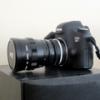
Kowa 16-S
webrunner5 reacted to ken for a topic
1 point -
Kowa 16-S
webrunner5 reacted to tweak for a topic
I've had 2 x Elmoscope II, 2 x 8Z and 1 x B&H. One 8Z had Gold flares, one Blue flares. The Blue one flared the easiest of any lens I've owned. Both Elmo Scopes were Gold flares, Both B&H were Gold flares. The Elmo IIs I had seemed to flare a bit easier than the B&H. The one I kept and use the most now is an Elmo II, but I think it's really dependent on production factors as to which is the sharpest/ best. They all can be good.1 point







